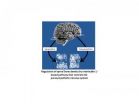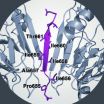(Press-News.org) Ship engine exhaust emissions make up more than a quarter of nitrogen oxide emissions generated in the Australian region according to a recently-published study by CSIRO and the Australian Maritime College in Launceston. Nitrogen oxide is a non-greenhouse gas, unlike similarly named nitrous oxide.
The remainder comes from road and air transport, energy generation, and industrial processes. Global studies indicate that shipping emissions of nitrogen oxide and sulphur contribute to the formation of photochemical smog and particles near land and in ports.
The authors, Dr Ian Galbally from CSIRO Marine and Atmospheric Research, and the Australian Maritime College's Dr Laurie Goldsworthy estimate that approximately 30 per cent of anthropogenic nitrogen oxide emissions and 20 per cent of oxides of sulphur emissions generated in the Australian region may come from shipping.
These are non greenhouse gases which have the potential to affect the air quality near coastal regions, and have consequences for human health and amenity.
Dr Galbally said around 10 per cent of global shipping freight passes through Australian ports annually. "Shipping is a major driver in the Australian economy, with 753 Mt of international exports worth $202 billion passing through Australian ports in 2008-2009."
"There is limited knowledge about the emissions from ships in coastal regions and ports in Australia, the effects of these emissions on air quality in the surrounding coastal and portside urban regions, or potential effects on human health" he said.
The ports of Perth, Melbourne, Sydney and Brisbane are located where seasonally-prevailing onshore winds dominate and the pollutants from shipping frequently will be carried into the air-sheds of these major urban population centres.
"We're seeing increasing regulation of land-based emissions but limited regulation of shipping emissions and expect that in the near-future there will be a need to monitor more closely emissions from shipping," Dr Galbally said.
The authors commenced this study with measurements of ship exhaust emissions on the coastal cement carrier MV Goliath.
Dr Goldsworthy said it is possible to quantify emissions generated based on knowledge of fuel type, fuel origin, engine size, cargo, and speed.
"We know from previous studies and the Australian Pollutant Inventory that ship emissions off the coast of Australia are substantially larger than in-port ship emissions."
"Nitrogen oxide and sulphur oxide emissions at sea are comparable in magnitude with other national sources such as energy generation and industry. They are potentially significant contributors to the air-sheds of major coastal cities," he said.
The study appeared recently in the journal Air Quality and Climate Change.
### END
Australian shipping emissions identified
2012-09-04
ELSE PRESS RELEASES FROM THIS DATE:
High levels of DDT in breast milk
2012-09-04
The highest levels ever of DDT in breast milk have been measured in mothers living in malaria-stricken villages in South Africa. The values lie well over the limits set by the World Health Organization. DDT has been used for many years in South Africa, sprayed indoors to fight malaria.
"To our ears, spraying DDT inside people's homes sounds absurd. But it is one of the most effective agents against malaria. And by only spraying adult mosquitoes in the vicinity of people, the risk of developing resistance in mosquitoes decreases, " says Henrik Kylin, environmental chemist ...
Bees, fruits and money
2012-09-04
Two thirds of the crops humans use for food production and the majority of wild plant species depend on pollination by insects such as bees and hover-flies. This ecosystem service, however, provided by nature to humans for free, is increasingly failing. As an example, after 3000 years of sustainable agriculture, farmers in the Chinese province Sichuan have to pollinate apple flowers themselves by using pollination sticks —brushes made of chicken feathers and cigarette filter. This is one small example of a problem occurring world-wide, including Europe. The work has been ...
Singapore scientists find genes associated with glaucoma, a major cause of eye blindness
2012-09-04
Singapore scientists have identified three new genes associated with Primary Angle Closure Glaucoma (PACG), a leading cause of blindness in Chinese people. PACG affects 15 million people worldwide, 80% of whom live in Asia.
The discovery, published in the prestigious scientific journal, Nature Genetics, on 26 August 2012, was conducted collaboratively by scientists from the Singapore Eye Research Institute (SERI)/Singapore National Eye Centre (SNEC), Genome Institute of Singapore (GIS), National University of Singapore (NUS), National University Hospital's Department ...
New infrared spectroscopy technique
2012-09-04
RUB-Researchers from the Chair for Biophysics have developed a new method for the detailed study of the interaction between pharmaceuticals and their target proteins. The pharmaceutical industry has already taken notice of the new infrared spectroscopy technique; the method is supposed to be implemented to investigate pharmacological agent-protein interactions in the EU project K4DD, which is supported by various major European pharmaceutical companies. "We now have a tool in our hands with which we can research the dynamics of pharmacologically interesting proteins in ...
New neural pathway controlling skeletal development discovered
2012-09-04
Jerusalem, Sept. 3, 2012 – Researchers at the Hebrew University of Jerusalem have discovered that a neuronal pathway -- part of the autonomic nervous system -- reaches the bones and participates in the control of bone development.
The newly discovered pathway has a key role in controlling bone density during adolescence, which in turn determines the skeletal resistance to fracture throughout one's entire life, say the researchers. They emphasize that understanding the mechanisms connecting the brain and the bones could have implications for possible future therapies ...
Broader approach provides new insight into diabetes genes
2012-09-04
Using a new method, diabetes researchers at Lund University, Sweden, have been able to reveal more of the genetic complexity behind type 2 diabetes. The new research findings have been achieved as a result of access to human insulin-producing cells from deceased donors and by not only studying one gene variant, but many genes and how they influence the level of the gene in pancreatic islets and their effect on insulin secretion and glucose control of the donor.
"With this approach, we can explain 25 per cent of variations in blood sugar levels. Previously, the best studies ...
New ESF-cofunded feasibility study calls for a single European researcher development framework
2012-09-04
The aim of the study was to assess the applicability across Europe of a generic framework for the professional development of researchers based on the Vitae Researcher Development Framework (RDF). The RDF is a UK-context framework set up with the purpose to better define researcher's professional profiles and to develop guidance for the continuous professional development of researchers. The report reveals that there is a real demand among researchers for a more structured approach towards researcher´s professional development and active career planning.
This new ESF-co-funded ...
Anchoring proteins influence glucose metabolism and insulin release
2012-09-04
HEIDELBERG, 3 September 2012 – Scientists from the United States and Sweden have discovered a new control point that could be important as a drug target for the treatment of diabetes and other metabolic diseases. A-kinase anchoring proteins or AKAPs are known to influence the spatial distribution of kinases within the cell, crucial enzymes that control important molecular events related to the regulation of glucose levels in the blood. In a new study published in The EMBO Journal, the team of researchers led by Simon Hinke and John Scott reveal for the first time that AKAPs ...
PharmaNet system dramatically reduced inappropriate prescriptions of potentially addictive drugs
2012-09-04
A centralized prescription network providing real-time information to pharmacists in British Columbia, Canada, resulted in dramatic reductions in inappropriate prescriptions for opioid analgesics and benzodiazepines, widely used and potentially addictive drugs. The findings are reported in a study in CMAJ (Canadian Medical Association Journal).
The study found that PharmaNet, a real-time prescription system implemented in BC pharmacies in July 1995, reduced potentially inappropriate prescriptions for opioids and benzodiazepines in two groups of patients — those on social ...
Canada should remove section of Criminal Code that permits physical punishment of children
2012-09-04
To promote good parenting, Canada should remove section 43 of its Criminal Code because it sends the wrong message that using physical punishment to discipline children is acceptable, argues Dr. John Fletcher, Editor-in-Chief, CMAJ (Canadian Medical Association Journal) in an editorial.
Section 43 of the Criminal Code of Canada states "…a parent is justified in using force by way of correction…if the force does not exceed what is reasonable under the circumstances."
The debate over whether spanking children is acceptable as a disciplinary tool for parents or whether ...


